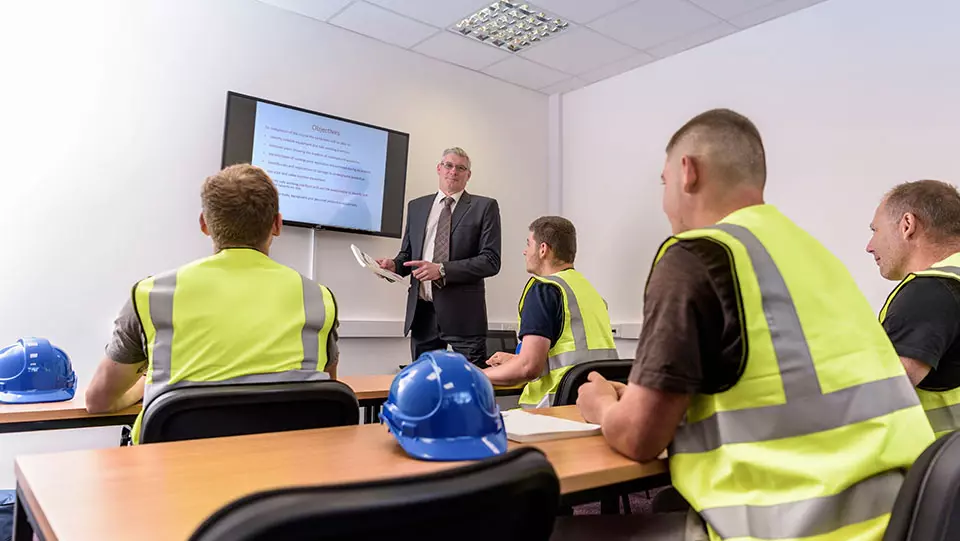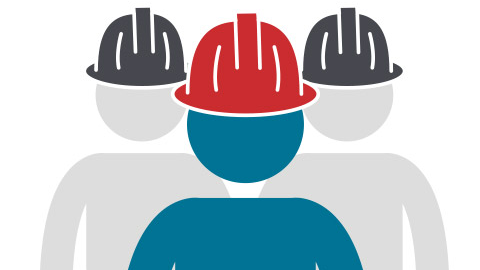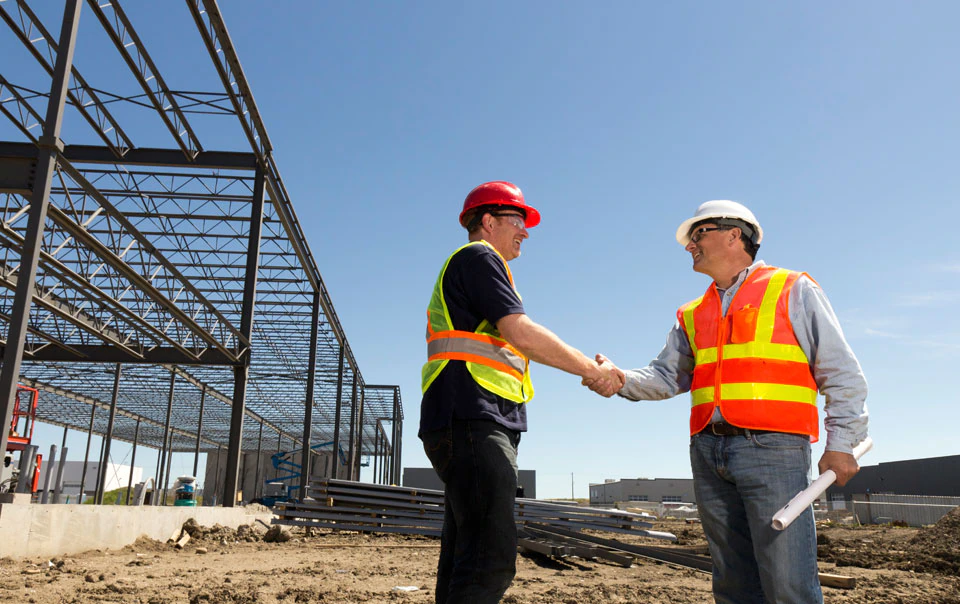How to Onboard Construction Workers


Promoting a safe workforce can begin long before new construction workers arrive for their first day on the job site. Having a formal hiring and onboarding process can help ensure that employees are properly trained to perform their required duties safely. Here’s a look at how workplace safety has improved in recent years, and some ways that construction companies can hire and onboard construction workers into a culture of safety.
Improvements in workplace safety measures adopted over the past four decades save thousands of workers’ lives and help to prevent countless injuries every year. The number of fatal worker accidents has declined by nearly two-thirds, from an average of 38 worker deaths a day in 1970 to 13 in 2020.1 But the job site remains a dangerous place for construction workers. One in five worker deaths in 2020 was in the construction field.2
Construction companies can take steps to help protect workers by hiring candidates with a focus on safety and then giving them ongoing safety training, according to Ken Wengert, Vice President of Risk Control, Construction, Energy & Marine at Travelers. “Creating detailed job descriptions, performing post-offer functional capacity exams and offering site-specific safety training can help companies give workers proper skills and support,” Wengert explained.
During the hiring process
-
Create detailed job descriptions. To help attract the right job candidates, create a well-documented job description that details the requirements of each job, including physical capabilities. This can help give prospective employees a more realistic picture of the job-related functions of the position.
-
Ask behavioral interview questions. Conduct a formal interview process, complete with behavioral interviewing questions, to determine whether the candidate fits the organizational safety culture and core values of your company.
-
Conduct post-offer functional capacity exams. Post-offer physicals and drug tests can help evaluate the physical fitness and capability of candidates to perform required duties. A physical exam can also be useful in documenting a baseline for new employee’s existing health (e.g., pre-existing hearing loss) before starting the job.
Onboarding and continuous training
The onboarding process should involve more than a one-size-fits-all approach, such as a general video presentation about safety practices at construction sites. All sites are different and can have a unique set of risks. Creating a site-specific training for workers helps align them with the company's safety culture and shows that the company values their continued safety, health and wellness.
- Tailor safety practices to specific projects. What are the specific safety concerns of your job site? What tasks, activities, materials or equipment require specialized training? Beyond a general safety overview, creating training based on your workforce can help workers engage with and better retain safety information.
- Pay attention to new workers. Forty-four percent of all construction workers compensation claims occur within the first year of employment with a contractor.3 Differentiating newer workers with different colored hard hats can help project supervisors and other more seasoned workers to watch out for them and offer context-specific safety guidance. Creating a culture where workers learn from one another can help encourage workers to keep other workers safe.
- Investigate accidents. Thorough accident analysis can help identify important areas for improving safety procedures and training. Construction companies can discover the root cause of the accident, devise corrective actions that can help prevent another accident in the future, and continuously improve safety management practices.
- Make training an ongoing process. Training is not just for new workers. While the majority of Travelers’ workers compensation claims involve employees who were on the job for less than three years, an injury can happen to workers of any tenure. As schedules progress on each project, solicit feedback from the employees and field leaders on topics in need of refresher training or resources that will reinforce the expectations with regard to safety, while also conveying the communication and culture throughout the organization.
From finding the best candidates to keeping them safe throughout their tenure, construction companies can play a hands-on role in making safety a priority. “Even if construction workers have years of experience, job sites are very dynamic,” said Wengert. “They change every day.” Continuous training can help identify new hazards and strategies to prevent future incidents.
Sources
1,2 https://www.osha.gov/oshstats/commonstats.html
3 2024 Travelers Injury Impact Report



